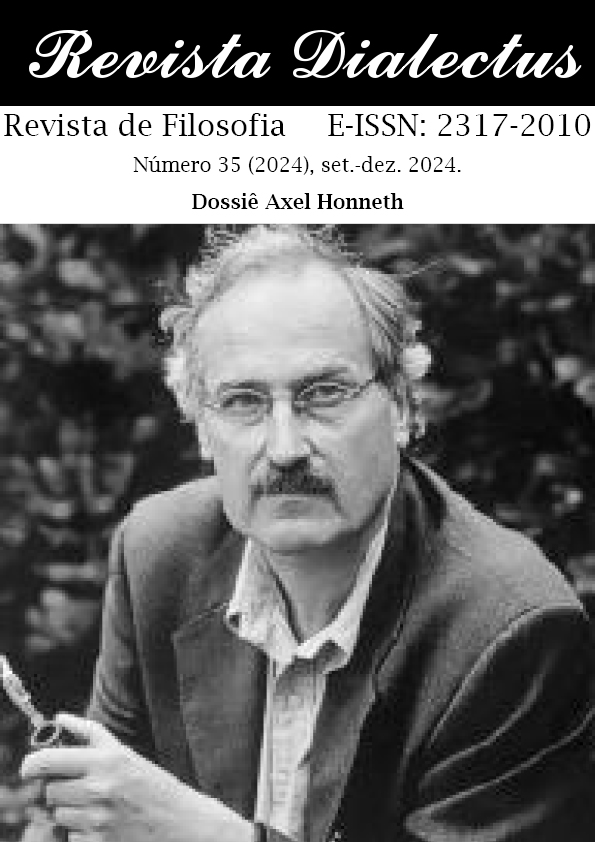PHENOMENAL, SUBJECTIVE, SELF-AWARE: A CLEAR DISTINCTION WITH A VIEW TO AUGMENTED SENSORY MODALITIES
DOI:
https://doi.org/10.30611/2024n35id94738Palabras clave:
Phenomenal experiences, subjective standpoints, self-awareness, sensory modalities, enactionismResumen
This paper aims to analyze the concepts of phenomenal experiences, subjective standpoints, and self-awareness in light of an enactive approach to mind. In doing so, it assumes that a clear-cut reorganization of those three concepts will help to deal more safely with technological enhancements of sensory modalities, including the hypothetical introspection of a person’s own neural states. It argues in favor of understanding the mental as a subcategory of the physical and of considering measurement scales and mutually complementary perspectives while tackling the mind-body relation. After discussing realistic prospects of sensory enhancement, it explores the overlaps of the notions of phenomenal experiences, subjective standpoints, and self-awareness, concluding for a reorganization that seems convenient to understand new neurotechnologies more effectively.
Citas
BACH-Y-RITA, Paul; KERCEL, Stephen W. Sensory Substitution and the Human–Machine Interface. Trends in Cognitive Sciences, v. 7, n. 12, 2003, p. 541-46.
CHURCHLAND, Paul M. Eliminative Materialism and the Propositional Attitudes. Journal of Philosophy, v. 78, n. 2, 1981, p. 67-90.
CHURCHLAND, Paul M. Reduction, Qualia, and the Direct Introspection of Brain States. Journal of Philosophy, Inc., v. 82, n. 1, 1985, p. 8-28.
DE GRAAF, Tom a.; HSIEH, Po Jang; SACK, Alexander T. The “Correlates” in Neural Correlates of Consciousness. Neuroscience and Biobehavioral Reviews, v. 36, 2012, p. 191-97.
FRANCKEN, Jolien C.; SLORS, Marc. From Commonsense to Science, and Back: The Use of Cognitive Concepts in Neuroscience. Consciousness and Cognition, v. 29, 2014, p. 248-58.
FROESE, Tom; MCGANN, Marek; BIGGE, William; SPIERS, Adam; SETH, Anil K. The Enactive Torch: A New Tool for the Science of Perception. IEEE Transactions on Haptics, v. 5, n. 4, 2012, p. 365-75.
GALLAGHER, Shaun. The Socially Extended Mind. Cognitive Systems Research, v. 25-26 (December), 2013, p. 4-12.
LONG, Benjamin; SEAH, Sue Ann; CARTER, Tom; SUBRAMANIAN, Sriram. Rendering Volumetric Haptic Shapes in Mid-Air Using Ultrasound. ACM Transactions on Graphics, v. 33, n. 6, 2014, p. 1-10.
Descargas
Publicado
Número
Sección
Licencia
Derechos de autor 2024 Daniel Andrade, Eduardo Chagas

Esta obra está bajo una licencia internacional Creative Commons Atribución-NoComercial-SinDerivadas 4.0.
Autores que publicam nesta revista concordam com os seguintes termos:
- Autores mantém os direitos autorais e concedem à revista o direito de primeira publicação, com o trabalho simultaneamente licenciado sob a Atribuição-NãoComercial-SemDerivações 4.0 Internacional (CC BY-NC-ND 4.0), que permite o compartilhamento não comercial, sem modificações e com igual licença do trabalho, com o devido reconhecimento da autoria e publicação inicial nesta revista.
- Autores têm autorização para assumir contratos adicionais separadamente, para distribuição não-exclusiva da versão do trabalho publicada nesta revista (ex.: publicar em repositório institucional ou como capítulo de livro), com reconhecimento de autoria e publicação inicial nesta revista.
- Autores têm permissão e são estimulados a publicar e distribuir seu trabalho online (ex.: em repositórios institucionais ou na sua página pessoal) a qualquer ponto antes ou durante o processo editorial, já que isso pode gerar alterações produtivas, bem como aumentar o impacto e a citação do trabalho publicado (Veja O Efeito do Acesso Livre).



















